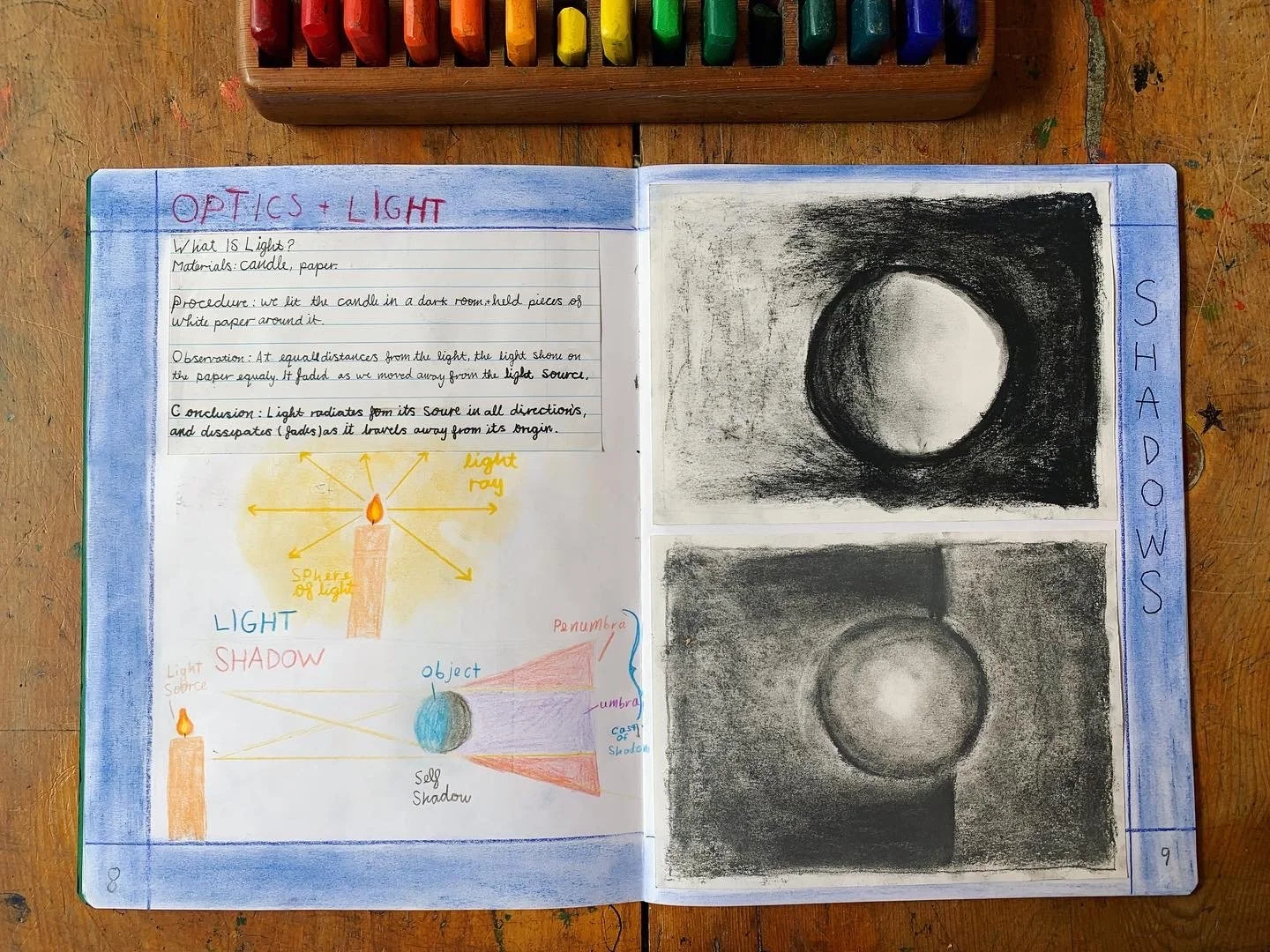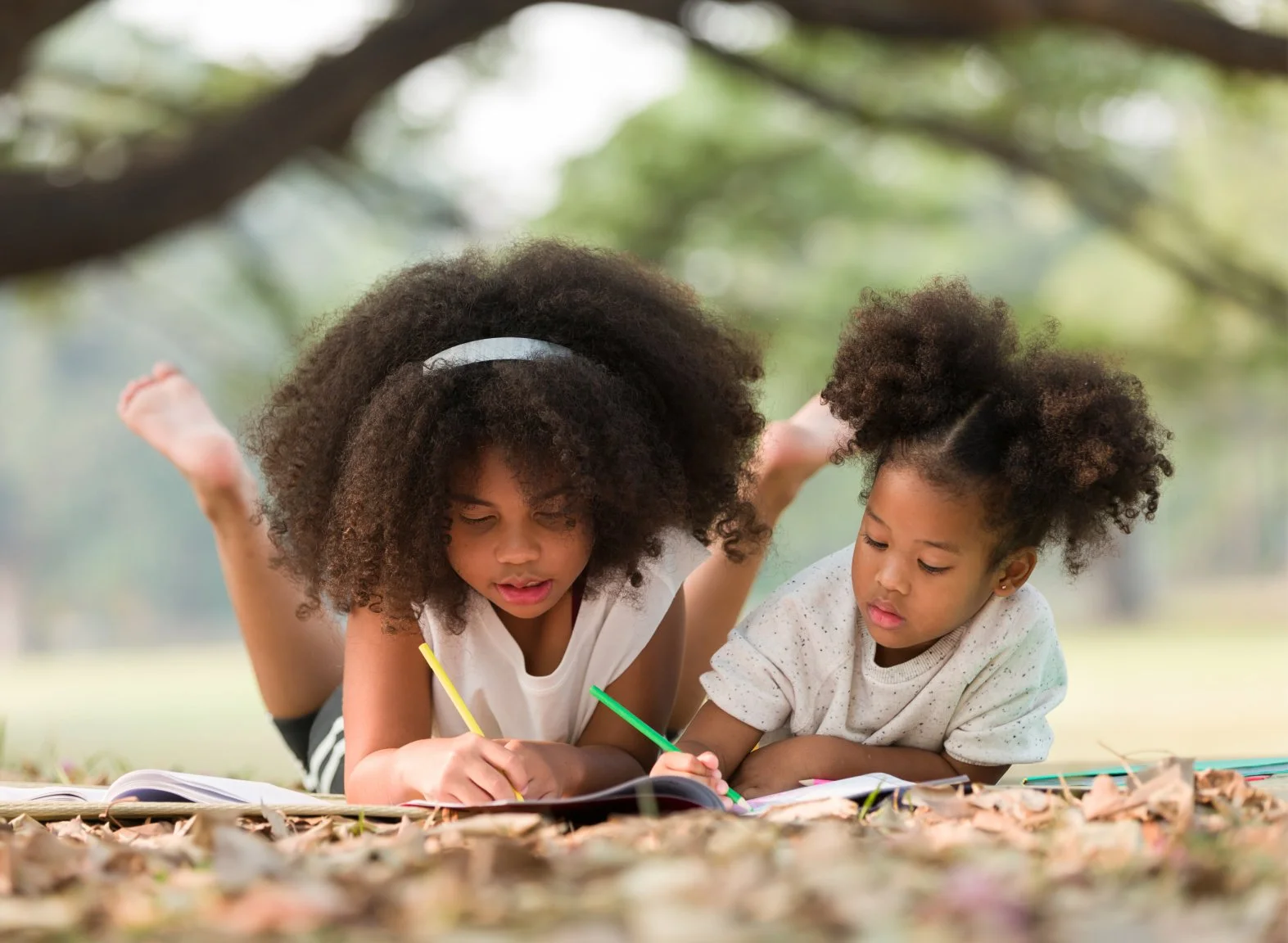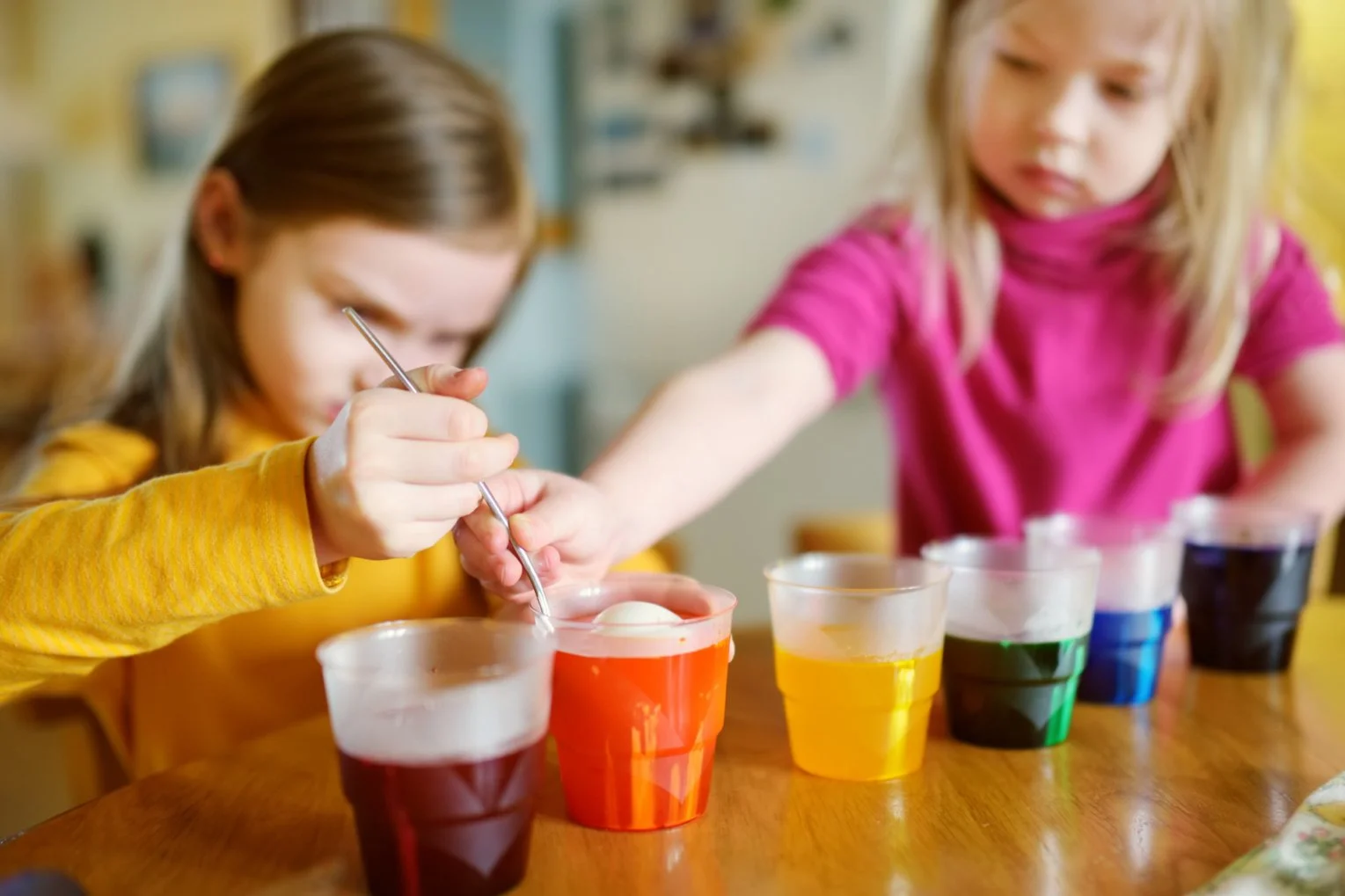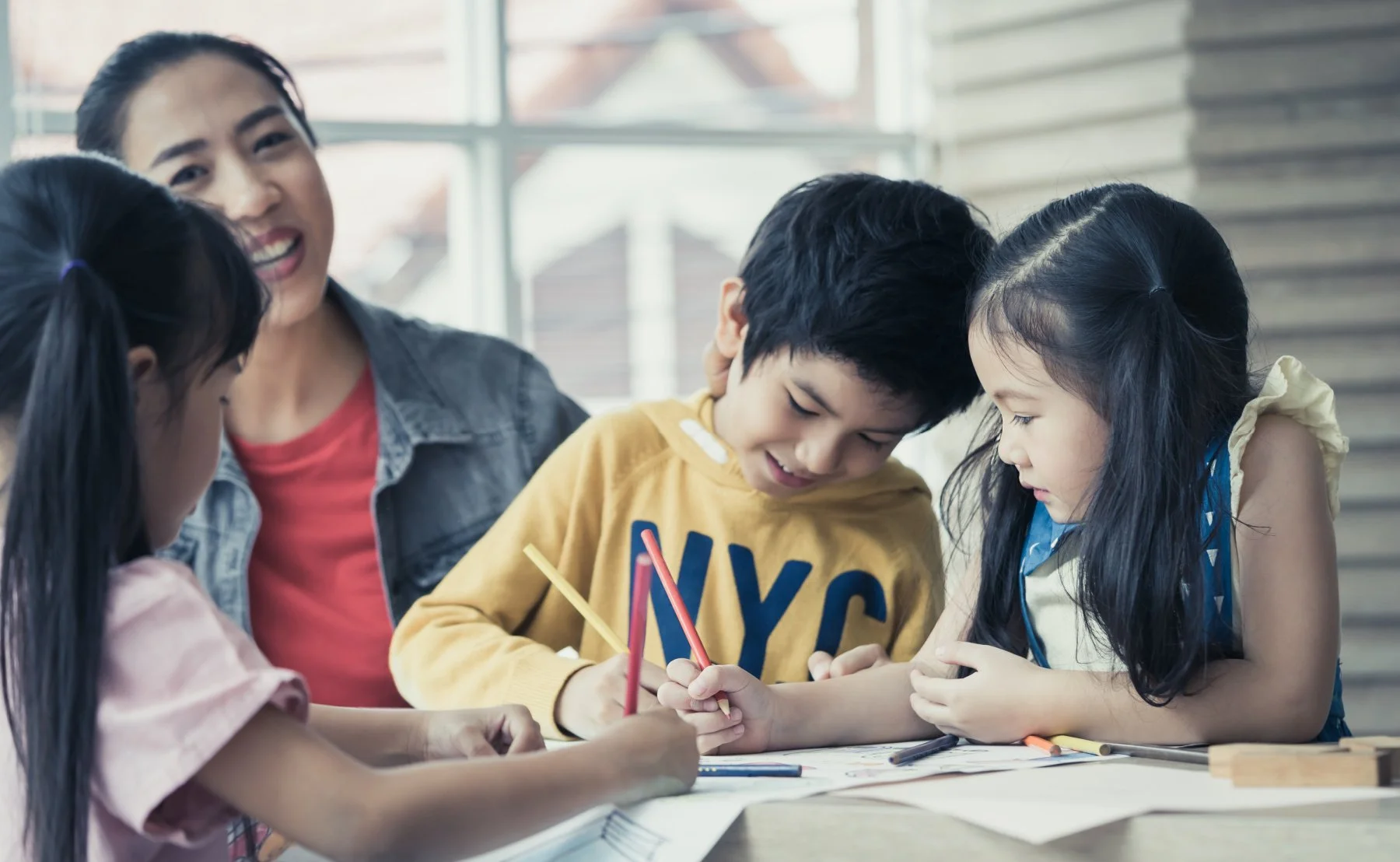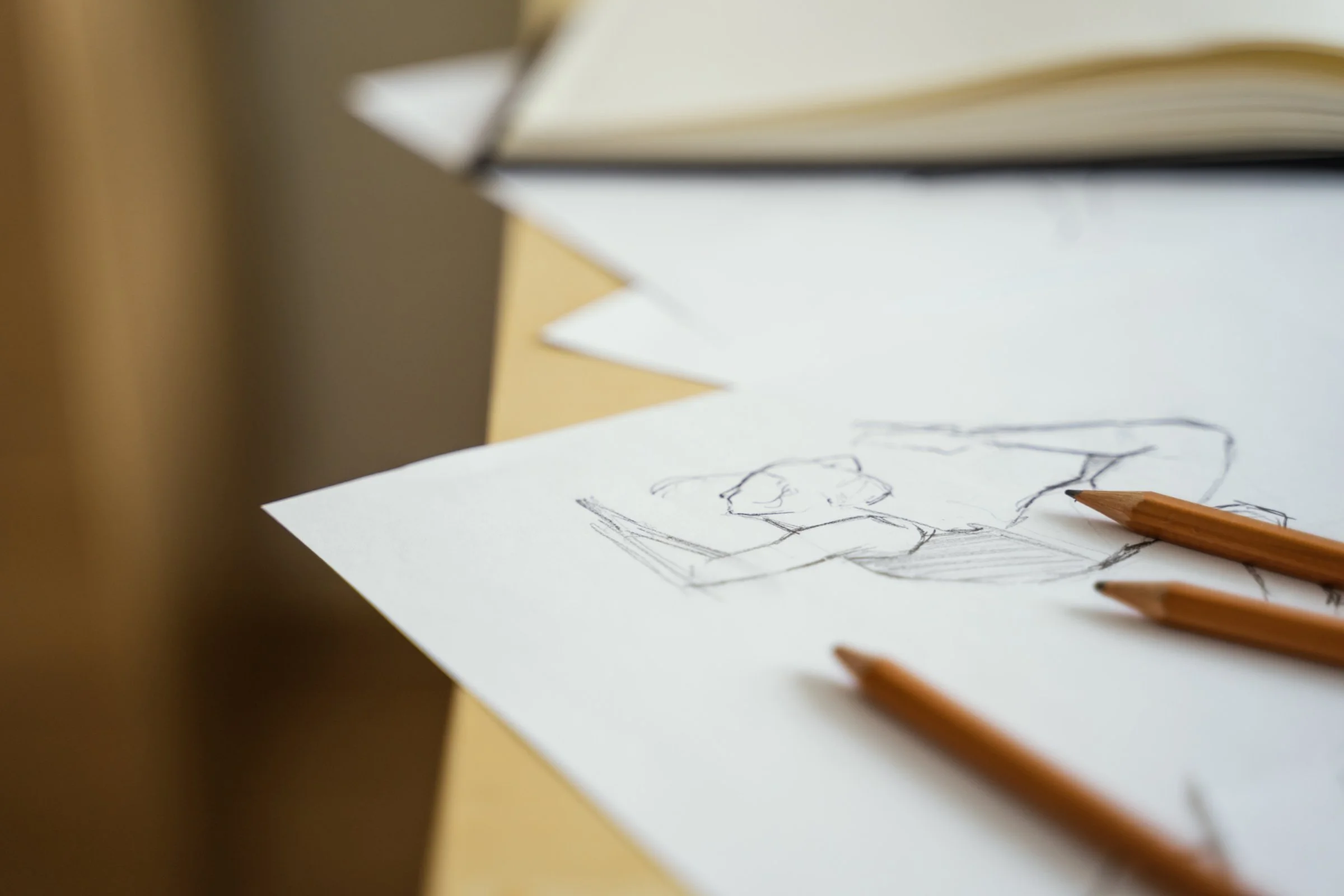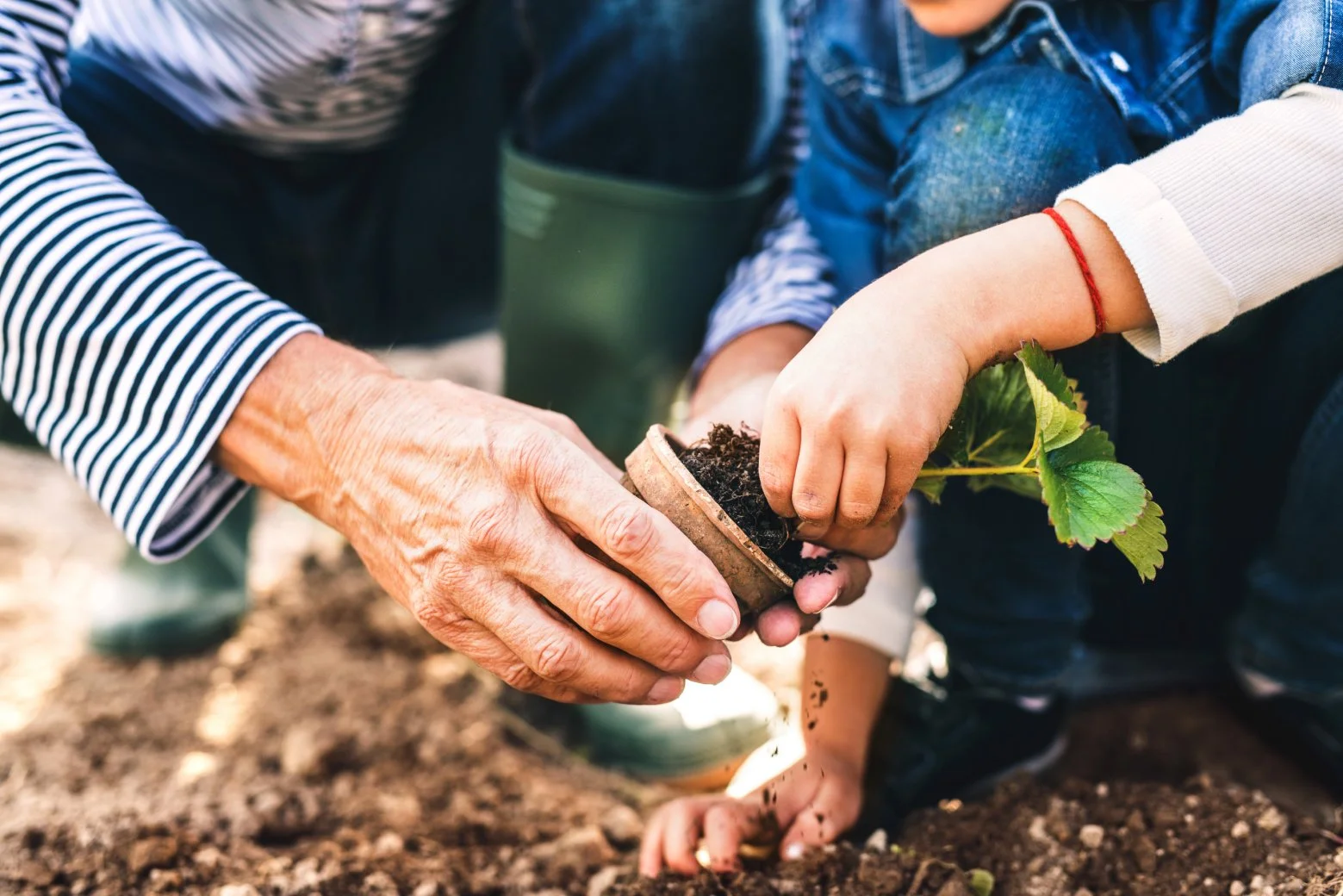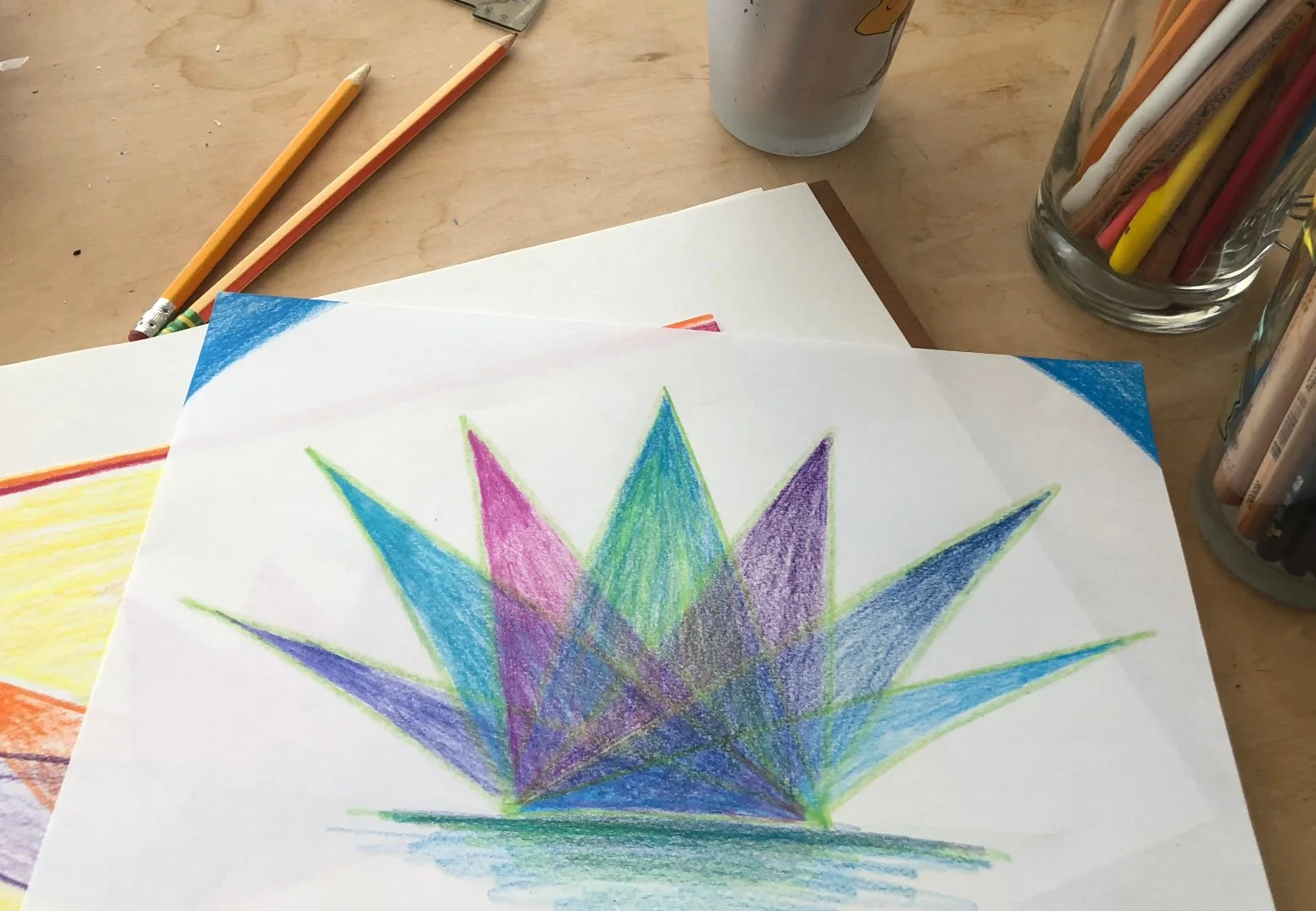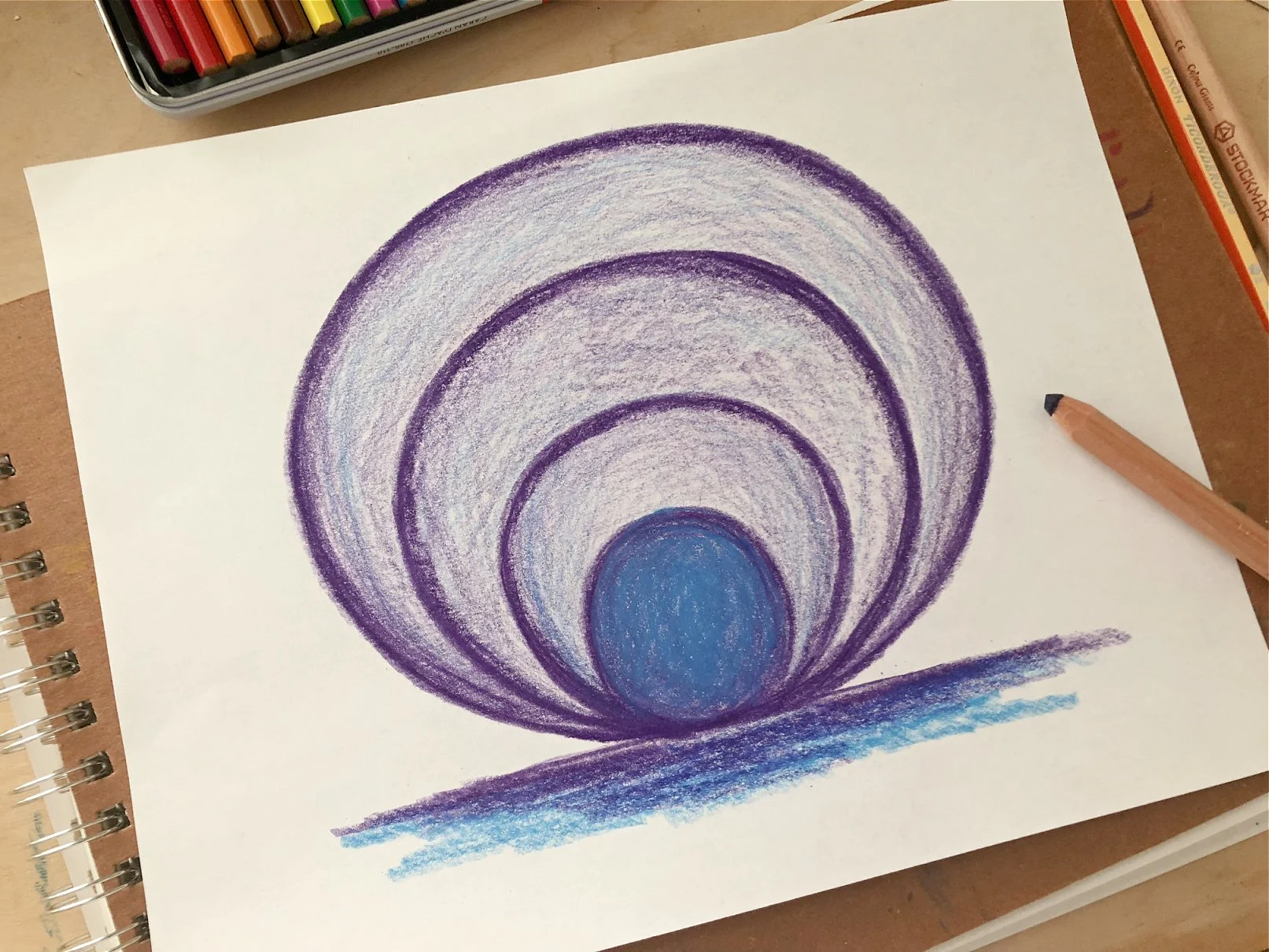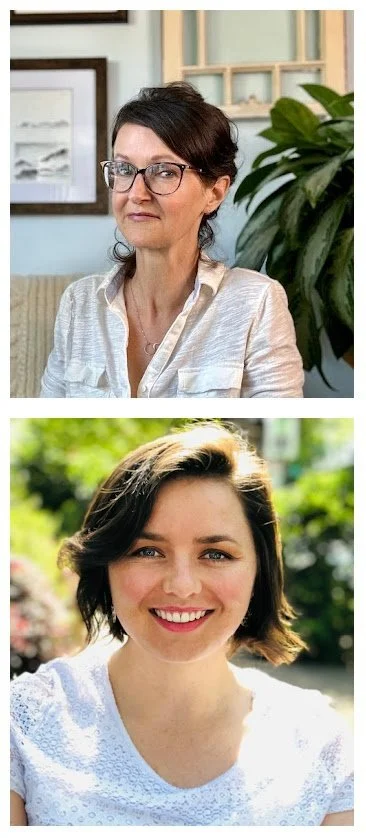
Waldorfish Blog
Waldorf Geology: Adapting the Curriculum to Your Region
In Waldorf education, the curriculum really shines when we adapt it to our local regions.
Use your observation skills and senses to explore geology where you live!
This encourages students not only to connect with the material and the greater concepts, but also to deepen their relationship with the land on which they live.
When we teach through the lens of place, we invite students into a living relationship with their surroundings. This is especially true in the Geology block, where children begin to explore how the Earth was formed, how landforms came to be, and how the very ground beneath our feet tells a story about time and transformation.
In the Waldorf Geology curriculum, we explore many facets of the Earth - the formation of rocks, mountains, and valleys; the work of glaciers and volcanoes; and the long arc of change that shapes the landscape. These are big, sometimes abstract ideas. But when we connect them to what’s right outside our door, they become tangible and meaningful.
Pedagogically, this connection is vital. Around ages 10 to 12, children are moving from an imaginative, story-based way of knowing to a more observational, cause-and-effect understanding of the world. Geology meets this developmental moment beautifully: it offers real-world evidence of forces at work, while still appealing to the child’s sense of wonder.
When students can see, touch, and question the rocks in their own landscape, learning becomes personal.
Here are five simple ways to make the Geology curriculum come alive where you live:
Keep it simple- go outside!
Go on a hike for the day, walk around your neighborhood, and notice the rocks around you. Even landscaping stones, rock walls, or architectural features can become starting points for observation and conversation. Ask: What might this rock have looked like before it was shaped or moved? Where might it have come from?
Go to your local library and explore books about your region.
Even tourist-focused resources may be helpful.
Do some internet research around local mineral, rock or geology clubs.
You may be surprised at how many active groups are nearby!
Go to your town’s local visitor center and explore the history of your town.
See how you can connect the vast world of geology to your region. Remember: Geology is connected to everything! Industrial history, rivers/lakes/water usage, city planning, etc.
Visit a Natural History Museum.
Many museums have geology or rock exhibits that tie local formations into larger geological stories. Seeing specimens up close helps students link their personal observations with the broader scientific picture.
Enjoy exploring the beauty of the natural world, and find geology all around you.
Overall, enjoy weaving the curriculum with where you live, and keep it simple. The act of observing, discussing, and connecting the material to what is around you is one of the most important and valuable activities your student can engage in.
When children experience that the land they live on is part of a great, unfolding story, learning becomes not just academic - it becomes soulful. This is meaningful learning, rooted in place and alive with curiosity.
About the Authors
Robyn Beaufoy is Waldorfish’s CEO, and also a course instructor for Simple Season, Waldorf Art for Beginners, and Weekly Art Foundations. You’ll find her intuitive touches and influences throughout everything Waldorfish offers. Robyn has been in the world of education for over 25 years, with an MA in Education and a certification in Waldorf teaching - she also homeschooled both of her children for some of that time. In 2012 Robyn co-founded Waldorfish.com, creating it with the vision of making Waldorf inspired-art and pedagogy more accessible, joyful, and doable for homeschoolers all over the world.
Caitlin Amajor is Waldorfish’s course instructor for Geometry grades 5 & 6, Botany, and Geology as well as our Administrative Assistant. From a young age, Caitlin has been immersed in Waldorf education, attending a Waldorf school from K-8. After receiving a BA in History, Caitlin gained her certification in Waldorf teaching, and spent seven years as a Waldorf class teacher in the upper grades. With a special fondness for watercolor painting and geometry, Caitlin loves bringing Waldorf education to her students all over the world, and seeing their own individuality and style bloom from the curriculum!
Nature Journaling in Fifth Grade: More Than Just a Drawing Lesson
In Waldorf Education, science is taught by doing and observing!
In Waldorf education, fifth grade marks a special shift - one where science becomes more focused, more intentional.
Beginning with Botany in the fifth grade and progressing to Physics, Chemistry, Geology, Anatomy, and more in the later years, students are invited into the world of science not through textbooks or lectures, but through phenomenology—an approach that begins with observation and lived experience.
In practical terms, this means students are encouraged to experience scientific phenomena directly, often through demonstrations or hands-on activities, and then draw their own conclusions. No memorizing facts just to regurgitate them—this is science experienced through the senses.
One of the most beloved activities in the fifth-grade Botany block is something called Nature Sketching (sometimes also called Nature Journaling). It’s simple on the surface: students take their colored pencils, etc. and sketchbooks outdoors, find one subject that captures their attention - a flower, a leaf, even a curled root peeking out of the earth - and spend time carefully observing and drawing it.
But here’s the thing: it’s not about the drawing. Not really.
Nature sketching provides a moment of quiet in a busy, fast world.
Sure, students are encouraged to draw what they see with care - matching color, texture, shape, position - but the true goal is deeper. We’re helping them learn to slow down, to really look, and to begin noticing the small details that might otherwise go unseen.
What does the flower smell like? What’s its texture? How many petals? What’s the light doing at that time of day?
This moment of quiet, focused attention is a rare gift in our fast-paced world. And it turns out, it’s doing more than just building observation skills. Nature journaling also introduces two incredibly important ways of thinking that scientists and artists alike rely on: distributed cognition and metacognition.
Let’s unpack those.
Distributed cognition is a fancy way of saying: sometimes, our brains need a little help keeping track of everything. That’s why we use things like calendars, grocery lists, or calculators - they’re all tools that “share the load” of thinking. In the same way, a nature journal becomes a thinking partner. Instead of trying to remember every detail of a flower or the texture of a leaf, the student writes it down or draws it. Their journal becomes an extension of their memory and attention - just like a scientist’s field notebook.
And then there’s metacognition - thinking about our thinking. As John Muir Laws puts it, “Thinking about our thinking helps us think better.” When students go back and review their nature sketches and notes, they’re not just remembering what they saw; they’re also reflecting on how they observed, what they were curious about, and how their perspective might have changed. That’s metacognition in action - and it’s a powerful habit to develop.
Nature sketching is a multi-faceted, powerful tool.
What’s more, the simple act of nature sketching engages a whole web of skills: fine motor skills, attention to detail, language arts (through labeling, note-taking, or journaling), even basic quantitative skills like counting, measuring, and comparing. And every time a student tries something new - maybe they’ve never blended colored pencils to show shading before, or never really paid attention to the shape of a leaf - their brain is making new connections. That’s neuroplasticity at work: the brain growing and adapting through experience.
So while it may look like just a quiet moment with paper and pencil out in the garden or forest, Nature Journaling is a deceptively powerful tool - one that builds scientific thinking, strengthens artistic observation, supports language and reflection, and even grows the brain itself!
And best of all? It invites the student into a lifelong relationship with the natural world - one quiet sketch at a time. And what our students learn to love, they will strive to protect.
More from Waldorfish:
About the Authors
Robyn Beaufoy is Waldorfish’s CEO, and also a course instructor for Simple Season, Waldorf Art for Beginners, and Weekly Art Foundations. You’ll find her intuitive touches and influences throughout everything Waldorfish offers. Robyn has been in the world of education for over 25 years, with an MA in Education and a certification in Waldorf teaching - she also homeschooled both of her children for some of that time. In 2012 Robyn co-founded Waldorfish.com, creating it with the vision of making Waldorf inspired-art and pedagogy more accessible, joyful, and doable for homeschoolers all over the world.
Caitlin Amajor is Waldorfish’s course instructor for Geometry grades 5 & 6, Botany, and Geology, as well as our Administrative Assistant. From a young age, Caitlin has been immersed in Waldorf education, attending a Waldorf school from K-8. After receiving a BA in History, Caitlin gained her certification in Waldorf teaching, and spent seven years as a Waldorf class teacher in the upper grades. With a special fondness for watercolor painting and geometry, Caitlin loves bringing Waldorf education to her students all over the world, and seeing their own individuality and style bloom from the curriculum!
Waldorf Sixth Grade Curriculum: Exploring the Natural World through Physics
In sixth grade, it’s time for a whole new way of exploring the natural world: the study of Physics!
As the child is leaving the comforting world of early childhood and entering into a new realm, it’s the perfect time to re-enliven and re-invigorate their sense of awe and love for the natural world, all while discovering scientific phenomena and law.
An example main lesson book page illustrating experiments around Optics, from our sixth grade Physics course!
While a Waldorf student has been exploring nature throughout the grades, middle school marks a shift in the curriculum where scientific study becomes far more structured and a key area of focus. These blocks call upon the educator to teach in a new way using phenomenology (Huh? Click here for more) and for the student to approach their learning from a different perspective.
So, what’s sixth grade physics all about? The block starts with the basics, and calls upon the student to use their observational and practical skills to discover the laws of sound, heat, light, magnetism, and electricity.
The curriculum typically begins with the study of acoustics, where students explore the nature of sound. They learn how sound is produced by vibrations and how it travels through different materials. Through activities involving musical instruments and simple sound experiments, students investigate phenomena like pitch, echo, and resonance.
The curriculum also introduces students to the principles of heat and thermodynamics. They examine how heat is generated, how it moves, and how it affects materials—causing them to expand, contract, or change state. This is a particularly fun aspect of the block; seeing an educator use a blowtorch is always exciting (when done safely, of course!)
The study of magnetism in action!
When studying optics (also referred to as the study of light) students observe the characteristics of light and how it behaves in our world. With the use of a completely blacked out room, students observe how light is invisible, how it can create a camera obscura, and explore the vast world of color and shadow.
Magnetism is explored through the use of simple magnets and iron filings, allowing students to observe magnetic attraction and repulsion, and the concept of magnetic fields. They experiment with magnetic materials and learn about the basic properties of magnets, including polarity.
Finally, students are given an introductory look at static electricity using balloons, various kinds of fabric and textiles, and other materials. Though explored simply, this portion is setting the stage for 8th grade physics when students will build motors, explore circuits, and more!
This 6th grade Physics block sets the foundation for the future as the curriculum deepens in complexity, where physics will be visited again in 7th and 8th grade.
It’s an exciting shift where the educator and student enter a new realm of observation, investigation and exploration!
More on the blog:
About the Authors
Robyn Beaufoy is Waldorfish’s CEO, and also a course instructor for Simple Season, Waldorf Art for Beginners, and Weekly Art Foundations. You’ll find her intuitive touches and influences throughout everything Waldorfish offers. Robyn has been in the world of education for over 25 years, with an MA in Education and a certification in Waldorf teaching - she also homeschooled both of her children for some of that time. In 2012 Robyn co-founded Waldorfish.com, creating it with the vision of making Waldorf inspired-art and pedagogy more accessible, joyful, and doable for homeschoolers all over the world.
Caitlin Amajor is Waldorfish’s course instructor for Geometry grades 5 & 6, and Botany, as well as our Administrative Assistant. From a young age, Caitlin has been immersed in Waldorf education, attending a Waldorf school from K-8. After receiving a BA in History, Caitlin gained her certification in Waldorf teaching, and spent seven years as a Waldorf class teacher in the upper grades. With a special fondness for watercolor painting and geometry, Caitlin loves bringing Waldorf education to her students all over the world, and seeing their own individuality and style bloom from the curriculum!
Waldorf Botany Curriculum: Shifting Focus to the Higher Plants
A watercolor painting of the “higher plants” from our Botany course!
In Waldorf fifth grade botany, the second block focuses on the “higher plants,” or those that have true leaves, roots, stems, and flowers!
(To learn more about the first block and its focus, click here).
The second block, often done in the spring, is the perfect time to study these more complex plants with new methods.
Why?
The curriculum meets the developing fifth grader right where they are, which is on the cusp of entering middle school!
The growing fifth grader is ready to use their observational skills in more complex and challenging ways, and the educator can begin to introduce concepts using phenomenological techniques, preparing them for middle school science curriculum.
The shift in the Botany curriculum is notable; the fifth grader is no longer living so much in the world of imagination and story, but instead, is eager to explore and learn more about the world around them.
In Botany, the second block closely follows the growth of a plant from the very beginning. As the fifth grader is growing and changing rapidly, it’s the perfect time to connect with nature and see how it blossoms as well.
An example main lesson book page from our Botany course.
Commonly, students study seeds, germination, photosynthesis, flowering, and seed dispersal, all the while incorporating opportunities to connect to plant life thriving in their own region. As well, students may explore trees, categorize plants according to their characteristics (monocots and dicots), and so much more- the possibilities are endless!
This block provides an opportunity for the educator to bring the students directly into the learning process, and begin to nurture observational skills and the ability to come to educated conclusions.
It’s a time to do, feel, see, smell, taste, and use all of the senses to connect with the plant world!
From sprouting seeds, to dissecting flowers, the curriculum provides all kinds of opportunities to enliven the students’ connection to the vast world of Botany.
Wondering where to begin?
Most simply, and perhaps more meaningfully, start outside! Gain inspiration, connect with nature, and explore the beauty of the higher plants out in nature; it really is the best place to begin.
Our Botany course provides a full year’s worth of curriculum for the school year, including two full blocks, hands-on demonstrations, and so much more.
About the Authors
Robyn Beaufoy is Waldorfish’s CEO, and also a course instructor for Simple Season, Waldorf Art for Beginners, and Weekly Art Foundations. You’ll find her intuitive touches and influences throughout everything Waldorfish offers. Robyn has been in the world of education for over 25 years, with an MA in Education and a certification in Waldorf teaching - she also homeschooled both of her children for some of that time. In 2012 Robyn co-founded Waldorfish.com, creating it with the vision of making Waldorf inspired-art and pedagogy more accessible, joyful, and doable for homeschoolers all over the world.
Caitlin Amajor is Waldorfish’s course instructor for Geometry grades 5 & 6, and Botany, as well as our Administrative Assistant. From a young age, Caitlin has been immersed in Waldorf education, attending a Waldorf school from K-8. After receiving a BA in History, Caitlin gained her certification in Waldorf teaching, and spent seven years as a Waldorf class teacher in the upper grades. With a special fondness for watercolor painting and geometry, Caitlin loves bringing Waldorf education to her students all over the world, and seeing their own individuality and style bloom from the curriculum!
Looking for something?
Welcome to Waldorfish! We started this adventure in 2012 out of a desire to make Waldorf training more accessible to class teachers in remote locations and to homeschooling families everywhere! Read more, click here.
WE WON! Our Weekly Art courses were voted “best interactive art program.” Learn more about the award, here.
A few of our most popular blog posts:





